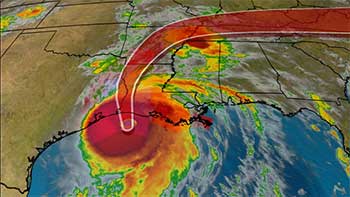NITI Aayog Releases Report on Export Preparedness Index (EPI) 2020
IN NEWS
- NITI Aayog in partnership with the Institute of Competitiveness released the Export Preparedness Index (EPI) 2020.

ABOUT
- The first report to examine export preparedness and performance of Indian states, EPI intends to identify challenges and opportunities; enhance the effectiveness of government policies; and encourage a facilitative regulatory framework.
- The structure of the EPI includes 4 pillars –Policy; Business Ecosystem; Export Ecosystem; Export Performance – and 11 sub-pillars –Export Promotion Policy; Institutional Framework; Business Environment; Infrastructure; Transport Connectivity; Access to Finance; Export Infrastructure; Trade Support; R&D Infrastructure; Export Diversification; and Growth Orientation.
- The Export Preparedness Index is a data-driven effort to identify the core areas crucial for export promotion at the sub-national level. All the states and union territories have been assessed on crucial parameters that are critical for any typical economic unit to achieve sustainable export growth.
- The Index would be a helpful guide for the state governments to benchmark regional performance with respect to export promotion and thus deliver key policy insights on how to improve and enhance the same.
FRAMEWORK
The 4 pillars and the rationale behind selection of each of them are given below:
- Policy: A comprehensive trade policy provides a strategic direction for exports and imports.
- Business Ecosystem: An efficient business ecosystem can help states attract investments and create an enabling infrastructure for individuals to initiate start-ups.
- Export Ecosystem: This pillar aims to assess the business environment, which is specific to exports.
- Export Performance: This is the only output-based pillar and examines the reach of export footprints of States and Union Territories.
DISCOVERIES AND CHALLENGES
- What this edition of the EPI has shown is that most Indian states performed well on average across the sub-pillars of Exports Diversification, Transport Connectivity, and Infrastructure. The average score of Indian states in these three sub-pillars was above 50%.
- Overall, most of the Coastal States are the best performers. Gujarat, Maharashtra and Tamil Nadu occupy the top three ranks, respectively.
- In the landlocked states, Rajasthan has performed the best, followed by Telangana and Haryana.
- Among the Himalayan states, Uttarakhand is the highest, followed by Tripura and Himachal Pradesh. Across the Union Territories, Delhi has performed the best, followed by Goa and Chandigarh.
- Based on the findings of the report, export promotion in India faces three fundamental challenges: intra- and inter-regional disparities in export infrastructure; poor trade support and growth orientation among states; and poor R&D infrastructure to promote complex and unique exports.
- There is a need to emphasize on key strategies to address these challenges: a joint development of export infrastructure; strengthening industry-academia linkages; and creating state-level engagements for economic diplomacy.
MITIGATION
- These strategies could be supported by revamped designs and standards for local products and by harnessing the innovating tendencies to provide new use cases for such products, with adequate support from the Centre.
- To achieve the target of making India a developed economy by focusing on ‘Atmanirbhar Bharat’, there is a need to increase exports from all the states and union territories. The EPI provides invaluable insights on how states can attain this goal.
CONCLUSION
- The Indian economy holds immense potential to become a strong exporter on the world stage. It is hoped that the detailed insights from this Index will guide all stakeholders towards strengthening the export ecosystem at both the national and sub-national levels.
Hurricane Laura
IN NEWS
- Hurricane Laura is rapidly strengthening and is poised to strike the upper Texas coast and western Louisiana with a ferocity that has not been seen in this region in decades.

ABOUT
- A tropical cyclone is a rapidly rotating storm system characterized by a low-pressure center, a closed low-level atmospheric circulation, strong winds, and a spiral arrangement of thunderstorms that produce heavy rain or squalls. Depending on its location and strength, a tropical cyclone is referred to by different names, including hurricane typhoon ,tropical storm, cyclonic storm, tropical depression, and simply cyclone.
- A hurricane is a tropical cyclone that occurs in the Atlantic Ocean and northeastern Pacific Ocean, and a typhoon occurs in the northwestern Pacific Ocean; in the south Pacific or Indian Ocean, comparable storms are referred to simply as "tropical cyclones" or "severe cyclonic storms".
THE SYSTEM DIVIDES STORMS INTO FIVE CATEGORIES:
- Category 1: Winds 74 to 95 mph (Minor damage)
- Category 2: Winds 96 to 110 mph (Extensive damage — Can uproot trees and break windows)
- Category 3: Winds 111 to 129 mph (Devastating — Can break windows and doors)
- Category 4: Winds 130 to 156 mph (Catastrophic damage — Can tear off roofs)
- Category 5: Winds 157 mph or higher (The absolute worst and can level houses and destroy buildings)
CRUDE OIL AND NATURAL GAS PRODUCTION DISRUPTION
- That amounts to about 84% of U.S. offshore crude oil production in the Gulf of Mexico. Additionally, producers have halted about 1.65 billion cubic feet per day of natural gas production from the Gulf of Mexico due to hurricane Laura.
Nationally Determined Contributions
Why in NEWS ?
- NITI Aayog will virtually launch the India Component of the Nationally Determined Contributions - NDC-Transport Initiative for Asia -TIA on 27 th August, 2020.
ABOUT
- The event will inform the transport, energy, and climate stakeholders in India about planned project activities for the upcoming year.
- It will also offer the opportunity to provide input about India’s transport challenges and how they relate to CO 2 reduction ambitions.
- The discussion will help focus the programme further on India’s specific needs and circumstances.
- The NDC-TIA India Component will focus on establishing a multi-stakeholder dialogue platform for decarbonizing transport in India and providing technical support on Green House Gas emission reduction measures.
- The NDC-TIA programme team will work in close cooperation and coordination with India’s government agencies, local decision-makers, researchers, industry experts, think tanks, and civil society organisations.
About Nationally Determined Contributions (NDC)
- During the run-up to the Paris climate change meeting in 2015 (COP-21) under the United Nations Framework Convention on Climate Change, each country decided the level and kind of effort it would undertake to solve the global problem of climate change through Nationally determined contributions (NDCs) or Intended Nationally Determined Contributions (INDCs).
- The INDCs will largely determine whether the world achieves an ambitious 2015 agreement and is put on a path toward a low-carbon, climate-resilient future.
- India's INDC, to be achieved primarily, by 2030-
- During the run-up to the Paris climate change meeting in 2015 (COP-21) under the United Nations Framework Convention on Climate Change, each country decided the level and kind of effort it would undertake to solve the global problem of climate change through Nationally determined contributions (NDCs) or Intended Nationally Determined Contributions (INDCs).
- The INDCs will largely determine whether the world achieves an ambitious 2015 agreement and is put on a path toward a low-carbon, climate-resilient future.
- India's INDC, to be achieved primarily, by 2030-
- To reduce the emissions intensity of the GDP by about a third.
- A total of 40% of the installed capacity for electricity will be from non- fossil fuel sources.
- India also promised an additional carbon sink (a means to absorb carbon dioxide from the atmosphere) of 2.5 to 3 billion tonnes of carbon dioxide equivalent through additional forest and tree cover by the year 2030.
Draft Health Data Management Policy
Why in NEWS?
- National Health Authority (NHA) releases (National Digital Health Missions’) NHDM's Draft Health Data Management Policy for public consultation.
About
- It will be available for public comments and feedback till September 3, 2020.
- Policy is in draft stage and will be finalized after receiving suggestions from members of general public.
Draft Health Data Management Policy
- The main objective of this draft policy is to provide adequate guidance and to set out a framework for handling sensitive personal data of individuals participating in the mission in accordance with all applicable laws and international standards.
- It also defines the set of frameworks of consent for the collection and processing of health data by healthcare practitioners and other entities.
- It also puts forward relevant standards to meet data interoperability and data sharing.
- As per the draft policy, anybody enrolled for the health mission will get a Health ID free of cost and they will have complete control over their individual personal data.
- People are free to take back the consent already given in order to restrict any sharing of personal data linked to the ID.
- Draft will increase awareness of the importance of data privacy and instill a privacy-oriented mindset among all the stakeholders and participants of the ecosystem
NDHM
- The NDHM is part of the National Digital Health Blueprint (NDHB).
- It aims to enhance the healthcare delivery by setting up a core e-health database of international standards.
- It allows patients to have control over their health data.
- Under NDHM, every Indian will get a Health ID card that will work as a health account comprising information regarding the person's past medical conditions, treatment and diagnosis.
- The citizens will be able to give their doctors and health providers one-time access to this data during visits to the hospital for consultation.
- However, access to the confidential medical data will have to be given separately for each visit due to fears over data confidentiality.
- Mission will allow patients to access health services remotely through tele- consultation and e-pharmacies, as well as offer other health-related benefits.
- The mission will be launched through a pilot launch in UTs including Puducherry, Chandigarh, Ladakh, Dadra and Nagar Haveli and Daman and Diu, Andaman & Nicobar Islands and Lakshadweep.
- After analysing the initial learnings from the launch in the Union Territories, the centre will work to launch the mission in the states as well. Significance
- It will help lessen all difficulties faced while getting appointments to visit a doctor, depositing money or getting a slip in the hospital.
- The mission aims to improve the efficiency, effectiveness, and transparency of health services in the country.







